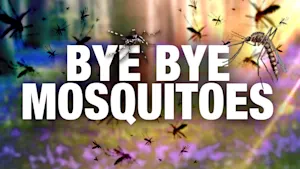Space telescope's 'golden eye' opens, last major hurdle
Webb is so big that it had to be folded orgami-style to fit in the rocket that soared from South America two weeks ago. The riskiest operation occurred earlier in the week, when the tennis court-size sunshield unfurled, providing subzero shade for the mirror and infrared detectors.
Share:
More Stories
1:31

What's Cooking: Uncle Giuseppe's Marketplace's prime rib roast
157ds ago1:27

What's Cooking: Uncle Giuseppe's quiche lorraine
389ds ago2:34

Guide: Safety tips to help prevent home burglaries
453ds ago2:19

Guide: Safety measures to help prevent fires and how to escape one
601ds ago2:07

Tips on how to avoid confrontation with sharks while swimming in the ocean
685ds ago2:33

5 tips to prevent mosquito bites and getting sick from viruses
696ds ago1:31

What's Cooking: Uncle Giuseppe's Marketplace's prime rib roast
157ds ago1:27

What's Cooking: Uncle Giuseppe's quiche lorraine
389ds ago2:34

Guide: Safety tips to help prevent home burglaries
453ds ago2:19

Guide: Safety measures to help prevent fires and how to escape one
601ds ago2:07

Tips on how to avoid confrontation with sharks while swimming in the ocean
685ds ago2:33

5 tips to prevent mosquito bites and getting sick from viruses
696ds agoCAPE CANAVERAL, Fla. - NASA’s new space telescope opened its huge, gold-plated, flower-shaped mirror Saturday, the final step in the observatory's dramatic unfurling.
The last portion of the 21-foot (6.5-meter) mirror swung into place at flight controllers’ command, completing the unfolding of the James Webb Space Telescope.
“I’m emotional about it. What an amazing milestone. We see that beautiful pattern out there in the sky now,” said Thomas Zurbuchen, chief of NASA’s science missions.
More powerful than the Hubble Space Telescope, the $10 billion Webb will scan the cosmos for light streaming from the first stars and galaxies formed 13.7 billion years ago. To accomplish this, NASA had to outfit Webb with the largest and most sensitive mirror ever launched - its “golden eye,” as scientists call it.
Webb is so big that it had to be folded orgami-style to fit in the rocket that soared from South America two weeks ago. The riskiest operation occurred earlier in the week, when the tennis court-size sunshield unfurled, providing subzero shade for the mirror and infrared detectors.
Flight controllers in Baltimore began opening the primary mirror Friday, unfolding the left side like a drop-leaf table. The mood was even more upbeat Saturday, with peppy music filling the control room as the right side snapped into place. After applauding, the controllers immediately got back to work, latching everything down. They jumped to their feet and cheered when the operation was finally complete two hours later.
“We have a deployed telescope on orbit, a magnificent telescope the likes of which the world has never seen,” Zurbuchen said, congratulating the team. “So how does it feel to make history, everybody? You just did it.”
His counterpart at the European Space Agency, astronomer Antonella Nota, noted that after years of preparation, the team made everything look “so amazingly easy.”
“This is the moment we have been waiting for, for so long,” she said.
Webb's main mirror is made of beryllium, a lightweight yet sturdy and cold-resistant metal. Each of its 18 segments is coated with an ultra thin layer of gold, highly reflective of infrared light. The hexagonal, coffee table-size segments must be adjusted in the days and weeks ahead so they can focus as one on stars, galaxies and alien worlds that might hold atmospheric signs of life.
Webb should reach its destination 1 million miles (1.6 million kilometers) away in another two weeks; it's already more than 667,000 miles (1 million kilometers) from Earth since its Christmas Day launch. If all continues to go well, science observations will begin this summer. Astronomers hope to peer back to within 100 million years of the universe-forming Big Bang, closer than Hubble has achieved.
By MARCIA DUNN
More from News 12

Plane crashes into Long Island Sound south of New Haven's Tweed Airport, FAA says
0:22

Police: Drunk driver crashes into tree in Southampton
2:23

Temperatures are about to soar on Long Island
0:49

Gov. Hochul announces new appointments to board overseeing Nassau University Medical Center
1:54

New soccer club comprised of Long Island natives plays charity game in its inaugural month
